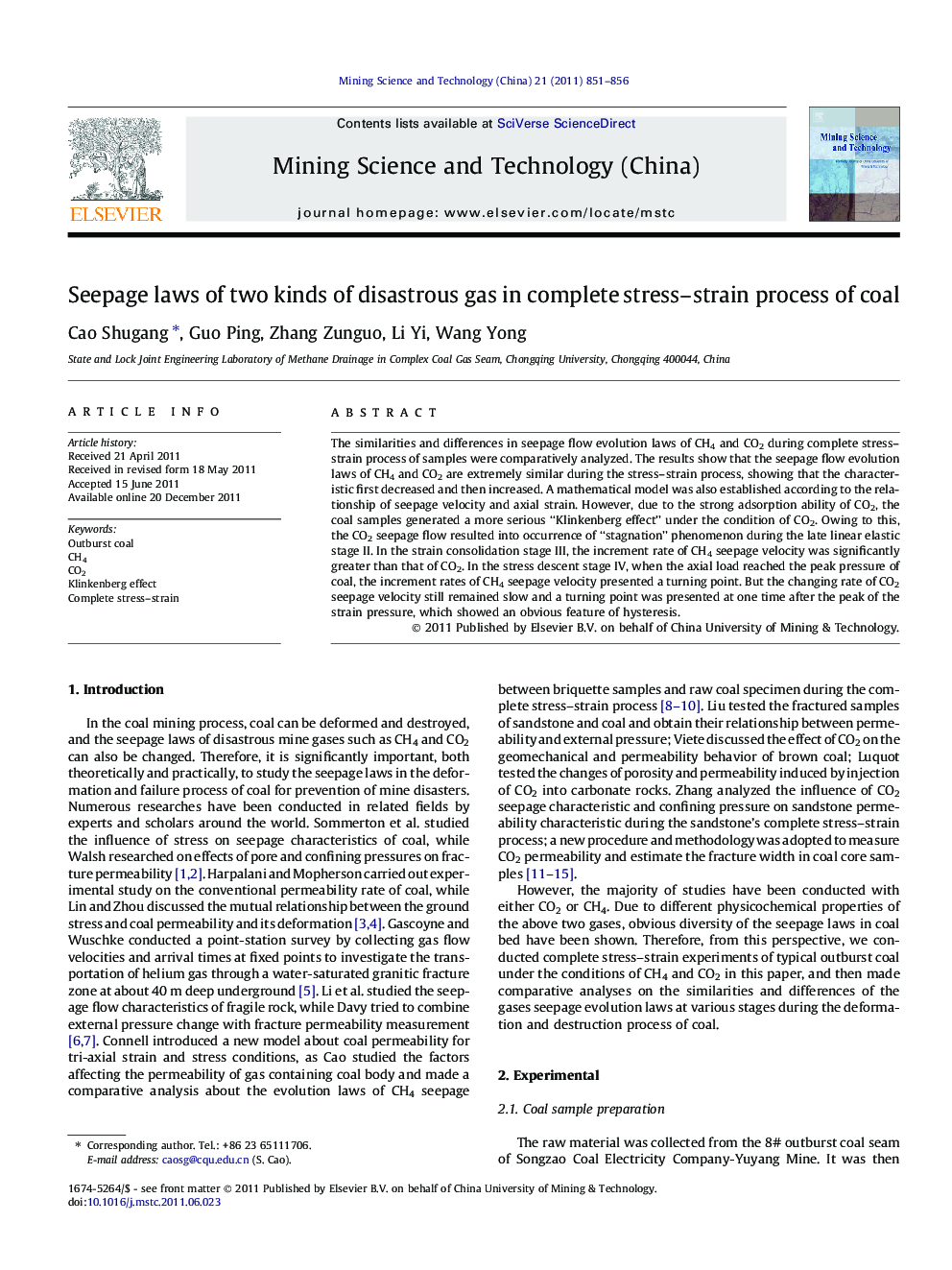| Article ID | Journal | Published Year | Pages | File Type |
|---|---|---|---|---|
| 294463 | Mining Science and Technology (China) | 2011 | 6 Pages |
The similarities and differences in seepage flow evolution laws of CH4 and CO2 during complete stress–strain process of samples were comparatively analyzed. The results show that the seepage flow evolution laws of CH4 and CO2 are extremely similar during the stress–strain process, showing that the characteristic first decreased and then increased. A mathematical model was also established according to the relationship of seepage velocity and axial strain. However, due to the strong adsorption ability of CO2, the coal samples generated a more serious “Klinkenberg effect” under the condition of CO2. Owing to this, the CO2 seepage flow resulted into occurrence of “stagnation” phenomenon during the late linear elastic stage II. In the strain consolidation stage III, the increment rate of CH4 seepage velocity was significantly greater than that of CO2. In the stress descent stage IV, when the axial load reached the peak pressure of coal, the increment rates of CH4 seepage velocity presented a turning point. But the changing rate of CO2 seepage velocity still remained slow and a turning point was presented at one time after the peak of the strain pressure, which showed an obvious feature of hysteresis.
